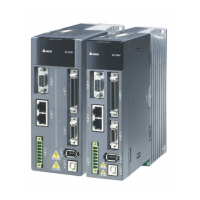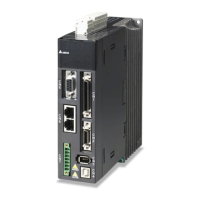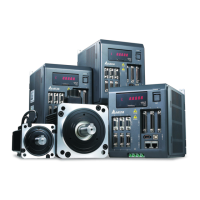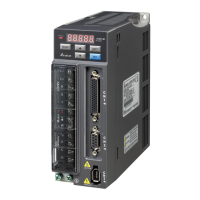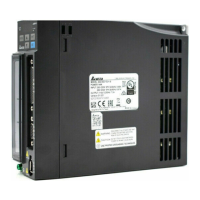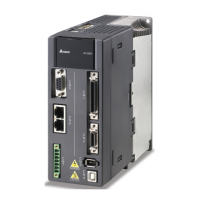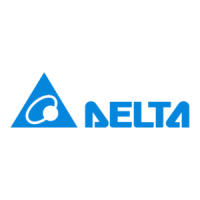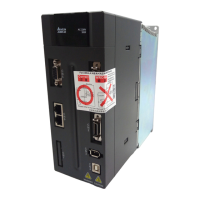ASDA-A2 Chapter 8 Parameters
Revision February, 2017 8-133
Unit:
N/A
Range:
0000h ~ 0xFF7D
Data Size:
16-bit
Format:
Hexadecimal
Settings:(This function is available in firmware version V1.038 sub54 and
later models)
X: Pulse masking function of master axis / JOG function of master axis
/ INCH function of master axis
Y: Correction of lead command length for pulse masking
Y3 Y2 Y1 Y0
-
Extra 1 Cycle Write to ROM CALC
- Calculate the value
of P5-87 and plus a
cycle of a resolution
of pulse command,
i.e. (P5-84/P5-83).
Calculate the value of P5-87
and write the value of P5-87
into EEPROM at the same time
to ensure the correct position of
E-Cam after the servo drive is
restarted (after switching power
off and on).
Calculate
the value of
P5-87.
Y=0 1: Calculate the value of P5-87 correctly according to actual
masking pulse number and additional virtual pulse number.
Y=0 2: Calculate the value of P5-87 correctly according to
actual masking pulse number and additional virtual pulse
number. Then, write the revised value of P5-87 into
EEPROM to keep the same phase after the servo drive is
restarted.
Y=0 7: Calculate the value of P5-87 correctly according to actual
masking pulse number and additional virtual pulse number.
But, the revised value of P5-87 will plus a value of (P5-84/P5-
83) to make lead pulse wait for an E-Cam cycle.
UZ: Pulse data when the master axis performs JOG or INCH
function
For example:
Start masking UZYX = 0x0001
JOG +3Kpps UZYX = 0x0302
JOG +20Kpps UZYX = 0x1402
JOG -32Kpps UZYX = 0x2003
INCH +255 PLS UZYX = 0xFF04
INCH -18 PLS UZYX = 0x1205
Complete and correct lead pulse UZYX = 0x0020 (Write into
EEPROM)
Disable this function UZYX = 0x0000 (This step can be ignored)
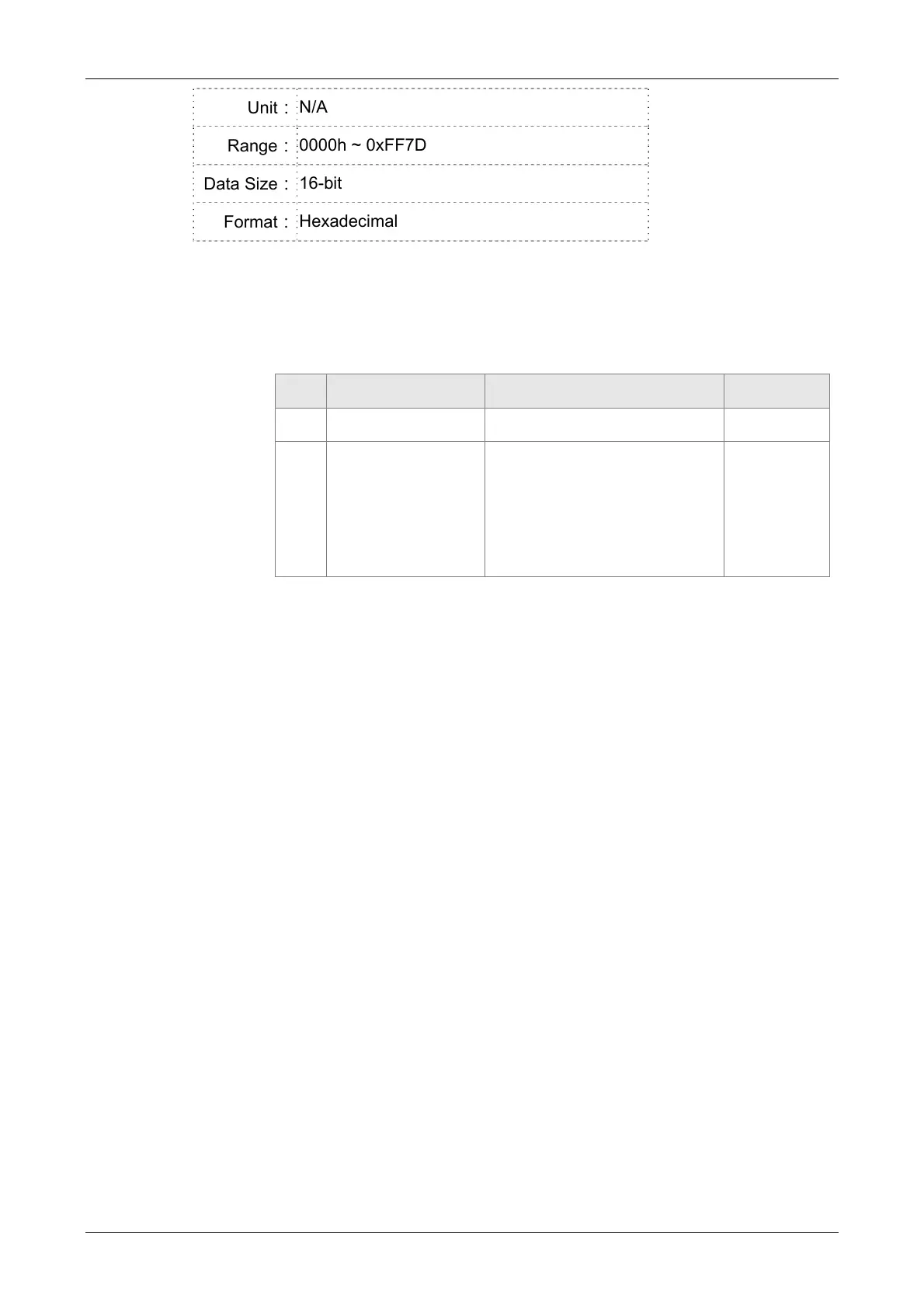